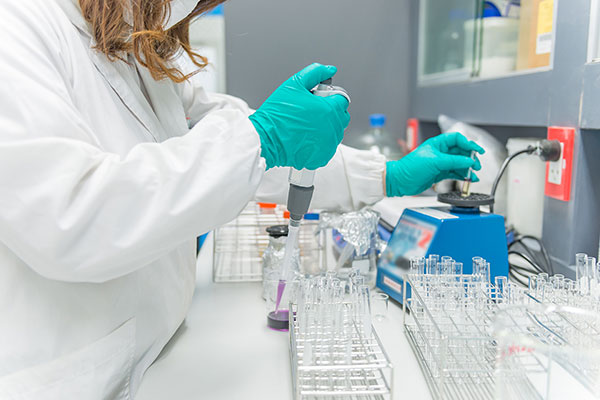Fluorescent Dyes
- Alexa Fluor
- ATTO Dyes
- BODIPY
- Coumarin
- Cyanine
- Fluorescein FAM
- ICG Dyes
- JOE Dyes
- Pyrene Dyes
- Rhodamine
- sulfo-Cyanine
- TAMRA Dyes
Customized Fluorescent Reagents
One-stop Solution for Your Research
BOC Sciences offers a one-stop solution for fluorescent reagents, providing custom synthesis, modification, and large-scale production services. Our comprehensive portfolio includes high-purity fluorescent dyes, probes, and labeling reagents for research and industrial applications, ensuring superior performance and reliability.
Explore More

Background
BOC Sciences is committed to providing customers with high-quality fluorescent dyes.
Certain chemicals that absorb light at one wavelength and fluoresce at another wavelength above or below the absorption wavelength are called fluorescent dyes.
Characteristics of Fluorescent Dyes
Not all substances have the property of producing fluorescence, it needs to have certain internal and external conditions.
- Molecules must have a structure that absorbs specific light, such as visible light or ultraviolet light, that is, conjugated double bond structure. Common structures include C = C, C = O, N=O, N=N, nitro, etc.
- With a certain fluorescence quantum yield.
- Appropriate environment, such as temperature, pH, solvent and solution state.
Classification of Fluorescent Dyes
Fluorescent dyes (fluorescent materials) can be divided into inorganic fluorescent materials and organic fluorescent materials. At present, common inorganic fluorescent materials include noble metal nano crystalline clusters, semiconductor quantum dots, rare earth doped nano particles, carbon dots, etc. Compared with inorganic fluorescent materials, organic fluorescent materials have the characteristics of many varieties, easy structure adjustment, high fluorescence quantum yield and good biocompatibility. According to whether they are charged or not, they can be divided into cationic dyes, anionic dyes and neutral dyes. From the excitation and luminous wavelength range of fluorescent dyes, and can be divided into visible light dyes, near infrared dyes, near infrared two region dyes, and two-photon fluorescent dyes. Common commercial dyes include coumarins, luciferin, rhodamines, imidazoles, naphthalimides, fluoroprene, and cyanines.
Application of Fluorescent Dyes
Fluorescence analysis and detection technology has been the focus of research in recent years. Therefore, under a good background, fluorescent dyes have been highly developed in different fields such as metal ion probe, molecular probe, pH probe, cell biology, environmental science, analytical chemistry, optical materials, and various biologically active ions analysis and testing, etc. These applications have greatly promoted the development of fluorescent dyes.
According to the different properties of dyes, various types of dyes have different uses. Here are some examples.
- Rhodamine
Rhodamine dyes, by introducing guest detection groups, make the dyes have a suitable fluorescence response mechanism (such as pet mechanism, open-loop and closed-loop of oxaanthracene, etc.), and a large number of dyes with excellent optical properties can be designed for probe detection.
- BODIPY
BODIPY near-infrared fluorescent dyes introduce heteroatoms into the matrix of BODIPY dyes. BODIPY fluorescent dye with near-infrared emission has been widely studied and reported, and has been used in cell imaging, probe detection and so on.
- Naphthalimide
Near infrared dyes, such as naphthalimide, have been successfully synthesized for the detection of biological ions.
- Cyanine
Cyanine dyes have good photostability and high fluorescence quantum yield. They have been widely used in the detection of metal ions, anions or pH in cells or organisms.
Resources

- Hoechst Dyes: Definition, Structure, Mechanism and Applications
- Mastering the Spectrum: A Comprehensive Guide to Cy3 and Cy5 Dyes
- Fluorescent Probes: Definition, Structure, Types and Application
- Fluorescent Dyes: Definition, Mechanism, Types and Application
- Coumarin Dyes: Definition, Structure, Benefits, Synthesis and Uses
- BODIPY Dyes: Definition, Structure, Synthesis and Uses
- Cyanine Dyes: Definition, Structure, Types and Uses
- Fluorescein Dyes: Definition, Structure, Synthesis and Uses
- Rhodamine Dyes: Definition, Structure, Uses, Excitation and Emission
- Unlocking the Power of Fluorescence Imaging: A Comprehensive Guide
- Cell Imaging: Definitions, Systems, Protocols, Dyes, and Applications
- Lipid Staining: Definition, Principles, Methods, Dyes, and Uses
- Flow Cytometry: Definition, Principles, Protocols, Dyes, and Uses
- Nucleic Acid Staining: Definition, Principles, Dyes, Procedures, and Uses
- DNA Staining: Definition, Procedures, Benefits, Dyes and Uses
- Cell Staining: Definition, Principles, Protocols, Dyes, and Uses
- Ion Imaging: Definition, Principles, Benefits, Dyes, and Uses
- Fluorescent Labeling: Definition, Principles, Types and Applications
Online Inquiry

